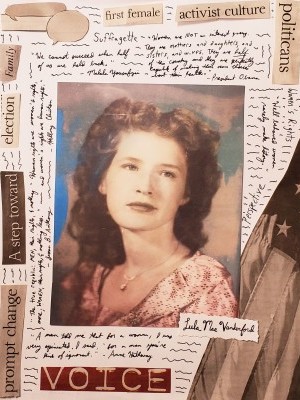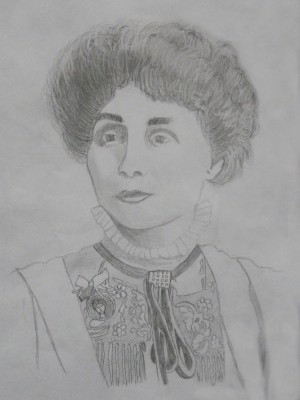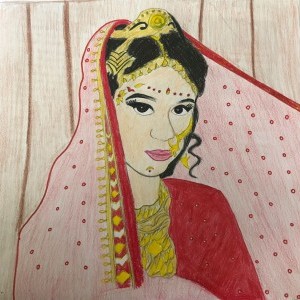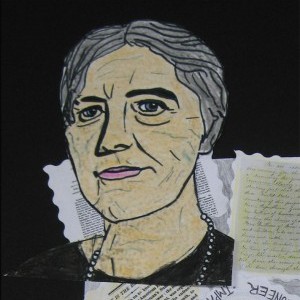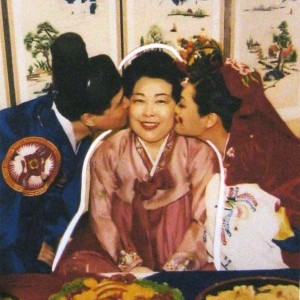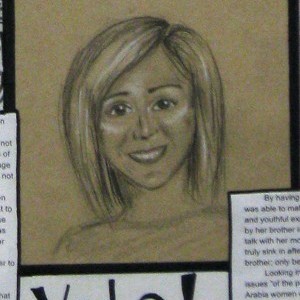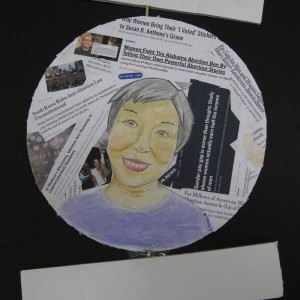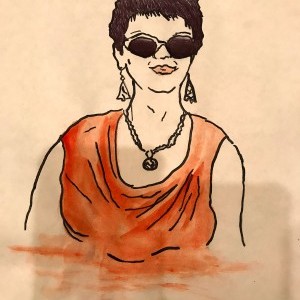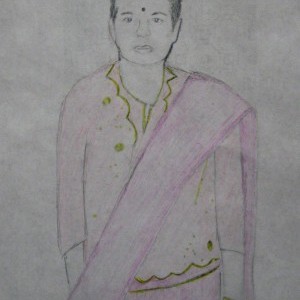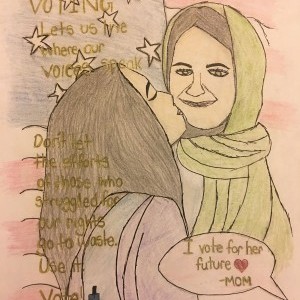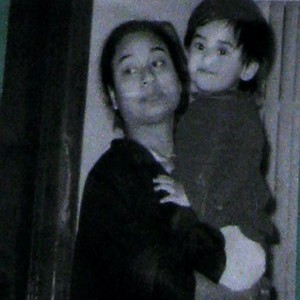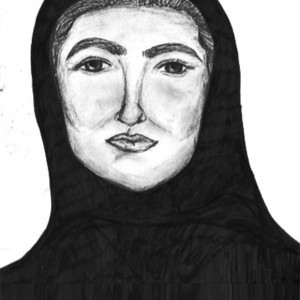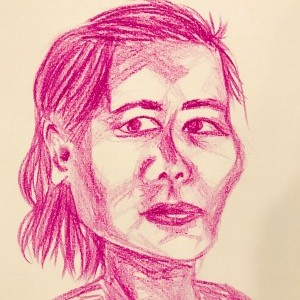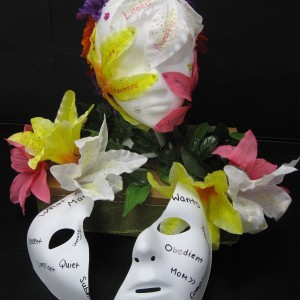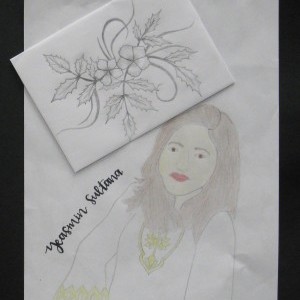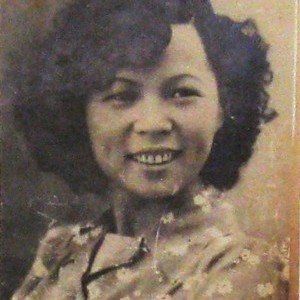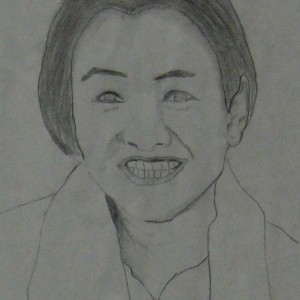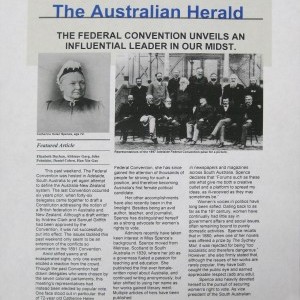Alicia Garcia Barrios, Ruth Rajcoomar, Savannah Scalfina & Noushin Maleeha
Townsend Harris High School | Flushing, NY | 11th Grade
Inspirational Family Member
My Mother
My mother, Alicia Garcia Barrios, voted as a United States citizen for the first time last year. It was not because women were not allowed to vote, but because she was not yet a citizen of the United States. She has been voting in the Peruvian elections every year mainly because it is mandatory for everyone between the ages of 18 and 70 to do so. However, voting for a government for a country she does not live in did not have much impact on her everyday life.
After waiting for twenty years, she was finally given the right to vote in the country she has lived in for more than a third of her life. I accompanied her to the polls on election day. I remember waiting for her for a long time, and I started to worry that she might not know how to fill out the ballot, or that she might have trouble filling it out because it was in English. When she came out, she looked like she wanted to cry, and I became even more worried because I thought that she was not able to vote. But when I saw the proud look in her eyes, I knew that everything went well. When I asked her how she remembered the event, she described it as one of the proudest moments of her life. This was a stark contrast to her indifference in voting in the Peruvian elections. She was also very thankful to me for helping her achieve this moment in her life. She said, “If it wasn’t for your help Cami, maybe I wouldn’t have been able to get my citizenship and vote.” As she was saying this, she started to cry a little. This was one of the rare times I had seen her cry, and at the moment I understood how important voting in the country that gave her so many opportunities was. I felt proud of her for not taking her vote for granted, like so many Hispanic people do because they feel as though they have no impact on the government.
Historical Figure I Admire
Adela Pankhurst
Growing up, Adela Pankhurst was surrounded by those with strong beliefs. Her father was a socialist, and her mother was a suffragette. Frequent guests to the Pankhurst home included William Lloyd Garrison, Peter Kropotkin, and other famous rebels of the time. At school, she saw firsthand how poverty affected the lives of children. Naturally, Adela Pankhurst was inclined to take part in some of the movements that were prominently displayed to her on a daily basis. She got her feet wet in the world of activism through the suffragette cause, starting in 1906. Though she spent time in prison for being violent to promote her cause, Pankhurst remained unfazed, working as an organizer for the Women’s Social and Political Union. She truly believed that her work there would assist women in obtaining the vote, which would consequently prevent the suffering of children.
When Pankhurst made it apparent that she was a socialist in 1914, her mother, Emmeline, and sisters gave her a boat ticket to Australia and a letter which introduced her to Vida Goldstein, a feminist living in Melbourne. She never saw her family again. Despite this sudden change in her environment, Pankhurst kept up her reputation as a strong-willed activist. She quickly became a part of the Victorian Socialist Party and the Women’s Peace Army, in addition to working as an organizer for Goldstein. These actions caused her to wear out her warm welcome from the people of Melbourne, who no longer appreciated her achievements. World War I began not long after, and Pankhurst ensured that Australia knew her opinions on it. She tirelessly wrote plays and pamphlets showing her disdain for the war, and campaigned every day against it, sometimes along with future prime minister John Curtin. Her activism landed her in prison again in 1917, this time for opposing price increases which were necessary to fund the ongoing war. Following this, Pankhurst married Tom Walsh, a prominent union leader. The couple played integral roles in the founding of the Communist Party of Australia in 1920, which prompted her mother to officially denounce her by means of a telegram. By 1923, both Pankhurst and Walsh embraced ideas incompatible with communism, and subsequently left the party. After a seaman’s strike, Walsh was sent to jail and nearly deported on account of his involvement. This event, combined with disagreements with his allies, caused both him and Pankhurst to completely lose faith in violent activism. She founded the Australian Women’s Guild of Empire, which was dedicated to opposing communism and upholding Christian beliefs. Throughout the next decade, Pankhurst decided to employ her skills as an organizer to campaign against strikes, a move backed by several employers. She additionally denounced contraception, abortion, and nursery schools regularly in her writings, remarking that they were detrimental to maternal values which were essential to the suffrage movement. Her move to the right end of the political spectrum was the most evident in 1940, when she made favorable comments about the Nazis and supported anti-Semitism. In the middle of World War II, Pankhurst became the organizer for Australia First, a pro-Japanese fascist organization. As a result, she was thrown into prison as a traitor without the benefit of a trial. To obtain her release, Pankhurst used an old suffragette tactic: a hunger strike. She did this in order to be with her dying husband. After his death, she removed herself from public life, a style of living which had consumed much of her time on Earth. Before dying in 1961, Pankhurst discovered Catholicism, her last ideology.
SOURCES +
What the Project Means to Me
In our experience with researching, we found that all women did not fit the standard mold for a suffragette. Some of them broke with the others in aspects of their ideologies, but they were still united by the cause of wanting the vote for women. However, those who fit the mold of a suffragette better were able to gain more popularity. Those who broke significantly with the others were left to the footnotes of history. The research also helped to determine how we should approach creating the portrait of Pankhurst. We included documents that assisted in shaping her life, and even one that demonstrated the rift in her family which resulted from her activism.
Talking with my mother about voting and her experience voting for the first time in the United States; It brought us a little closer because now we can talk with each other about more personal things and be more open with each other. Also, being able to talk with her for this project made me realize how important it was for her to vote, especially after years of being denied because of her non-citizenship status. It is important to connect family experiences to history because then we are able to see the continuities and changes from the past to the present. Voting on all levels matters because we must all follow the laws put into place by our elected officials. By voting, we indirectly are able to have a say in which laws get passed by choosing the candidates we believe will best represent our needs and interests.
Explore the Archive
More From This Class
Click on the thumbnails below to view each student's work.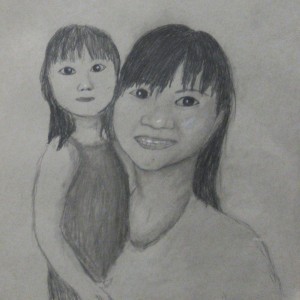
Vivian Chen, Josephine Chen, Ivan Chan, Zafirah Rahman, Neeharika Reddy, Daniel Shi, Daniel Shi, Jacqueline Cho & Osiris Guerrero
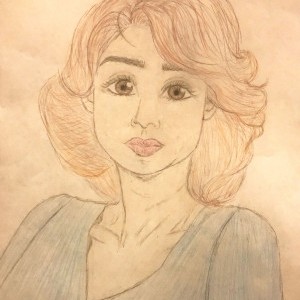
Jennifer Moran, Adebola Ademola, Julia Hong, Vicki Kanellopoulos, Inga Kulma, Maimunah Virk, Deborah Molina & Kailey Van
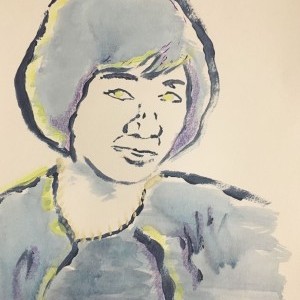
Kristina Chang, Sarah Chowdhury, Bethany Leung, Letian Fang, Cathy Choo, Kelly Chan, Emily Tan, Adamary Felipe & Kenney Son
Deadline Extended
There's still time to join Women Leading the Way.
Become a part of our storytelling archive. Enroll your class today.
Join the Project

